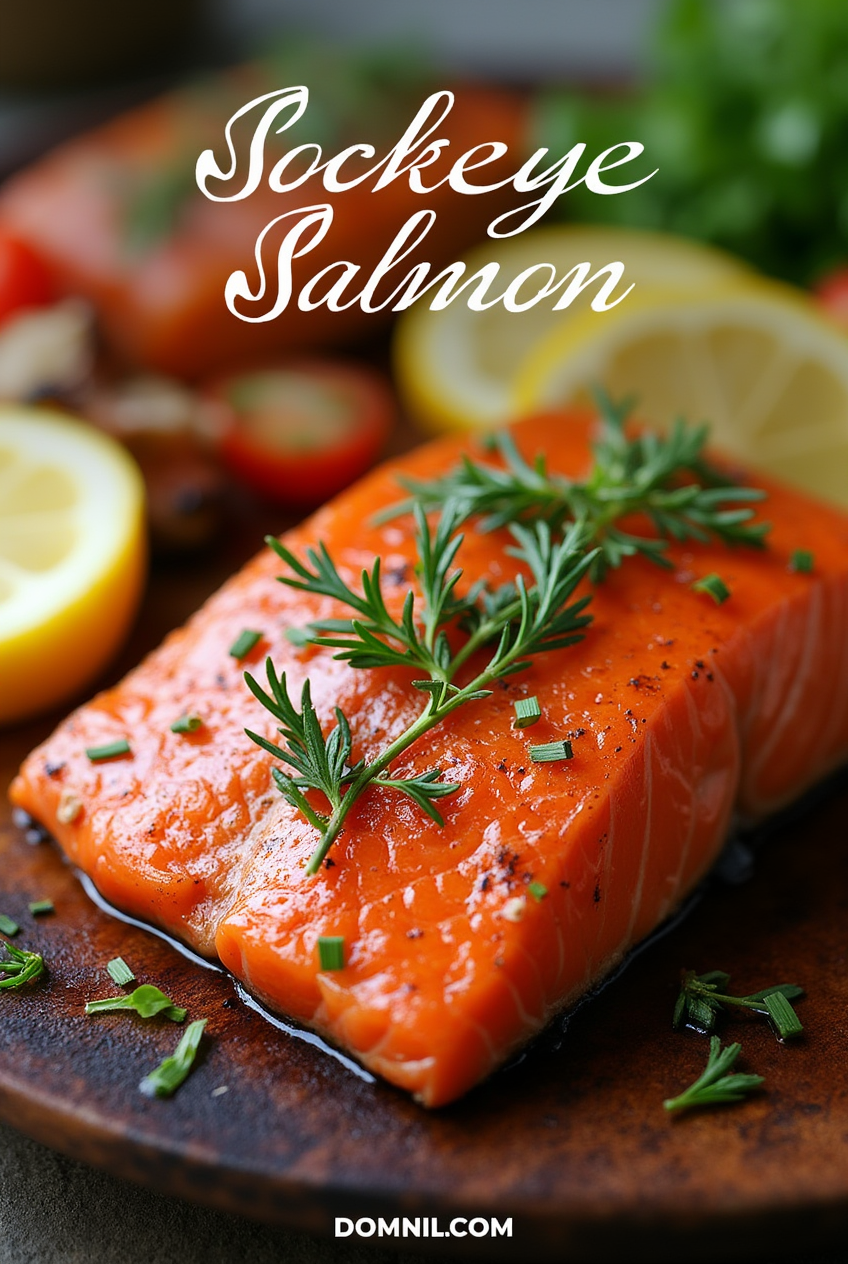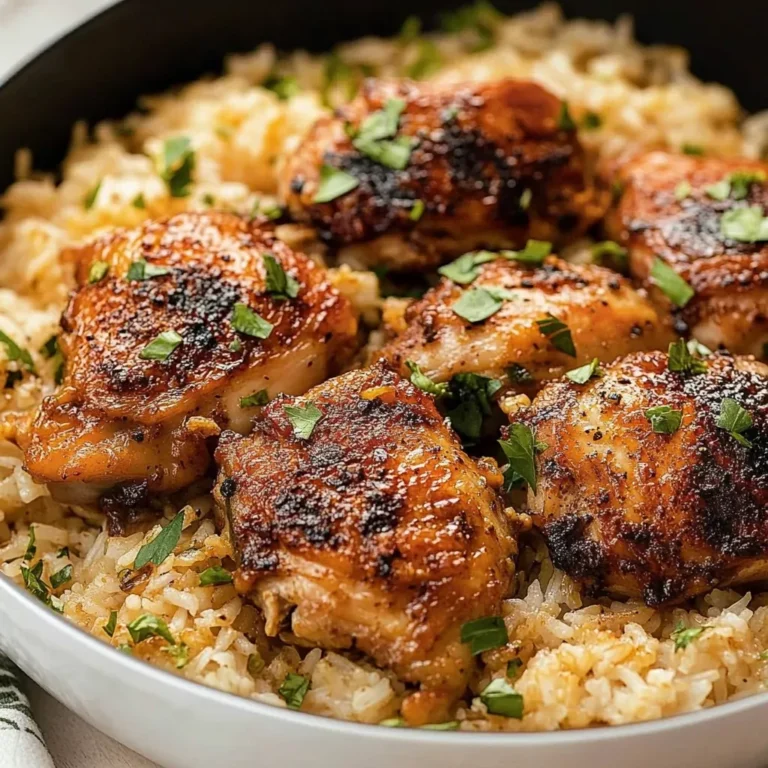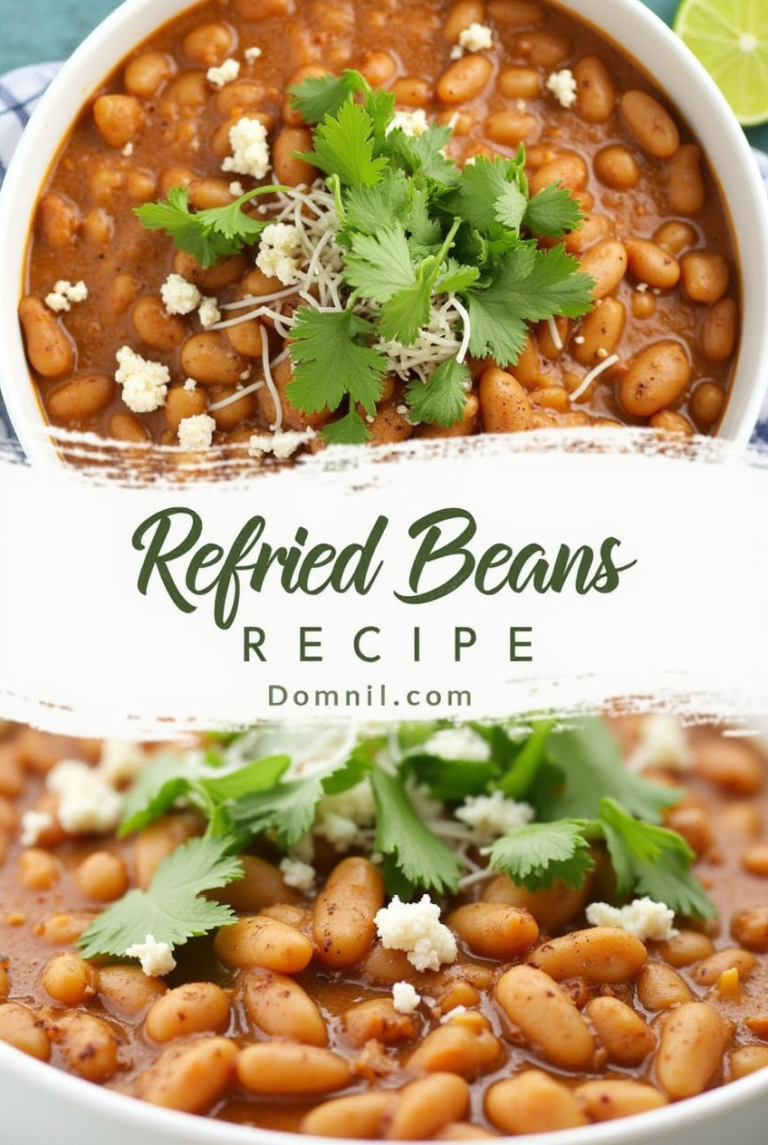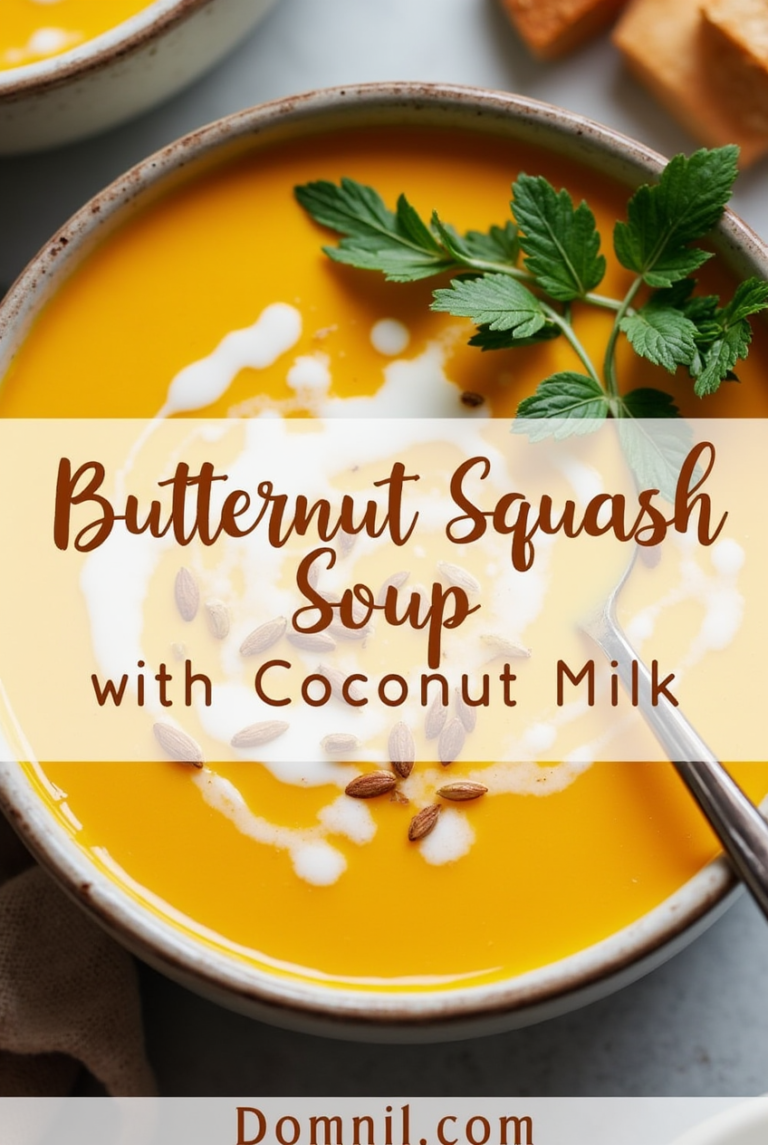Everything You Need to Know About Sockeye Salmon
Introduction to Sockeye Salmon
What Is Sockeye Salmon?
Sockeye salmon, scientifically known as Oncorhynchus nerka, is one of the most prized and iconic species of Pacific salmon. Renowned for its deep red flesh, rich flavor, and impressive journey from freshwater streams to the open ocean and back again, sockeye salmon plays a crucial role both in nature and on our dinner plates. Sometimes called “red salmon” due to its vibrant hue, this fish is a favorite among chefs, health enthusiasts, and anglers alike.
Unlike other types of salmon, sockeye is known for its smaller size but more robust flavor, making it ideal for grilling, smoking, and even sushi. The fish is highly migratory and displays one of nature’s most incredible feats by traveling thousands of miles across rivers and oceans just to return to the place of its birth to spawn and die. It’s a powerful story of endurance and instinct, and one that continues to fascinate scientists and nature lovers.
In the world of seafood, not all salmon are created equal, and sockeye is often considered a superior choice due to its nutritional density and firm texture. It’s also one of the best indicators of environmental health, which is why its presence (or absence) in a region can signal much more than just a fishing opportunity—it’s often a reflection of how well we’re taking care of our rivers, oceans, and the delicate ecosystems they support.
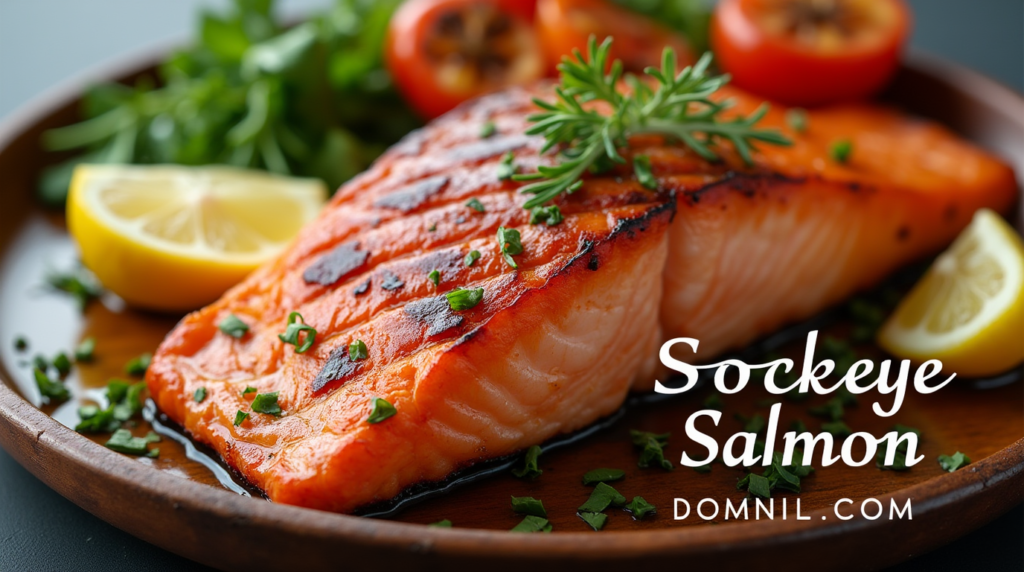
Table of Contents
Unique Characteristics of Sockeye Salmon
So what sets sockeye apart from other salmon species? For starters, its appearance is quite distinct. While living in the ocean, sockeye salmon typically has a silver-blue coloration. But as they migrate upriver to spawn, they undergo a dramatic transformation—their bodies turn bright red and their heads become green. This striking shift is not just aesthetic but tied deeply to their reproductive cycle.
Sockeye are also filter feeders during their time in the ocean, primarily consuming plankton and small crustaceans like krill. This diet contributes to their vivid flesh color, much like flamingos who eat similarly colored food. Their size typically ranges from 5 to 15 pounds, and they measure between 24 to 33 inches long—smaller than their Chinook or Atlantic cousins but packed with more flavor.
Another fascinating trait? Sockeye salmon often spawn in lakes and rivers connected to lakes, which makes their habitat needs a bit more specific. This, in turn, makes them more susceptible to habitat disruption from damming, pollution, and climate change. Unlike other species that can adapt more easily, sockeye populations often drop sharply when their specific needs aren’t met.
Their synchronized return to spawning grounds also leads to one of the most spectacular natural events on Earth: entire rivers teeming with red-bodied fish, leaping up waterfalls, and navigating rocky riverbeds—all to lay eggs and continue the cycle of life. This epic migration has not only ecological significance but cultural and economic impact as well.
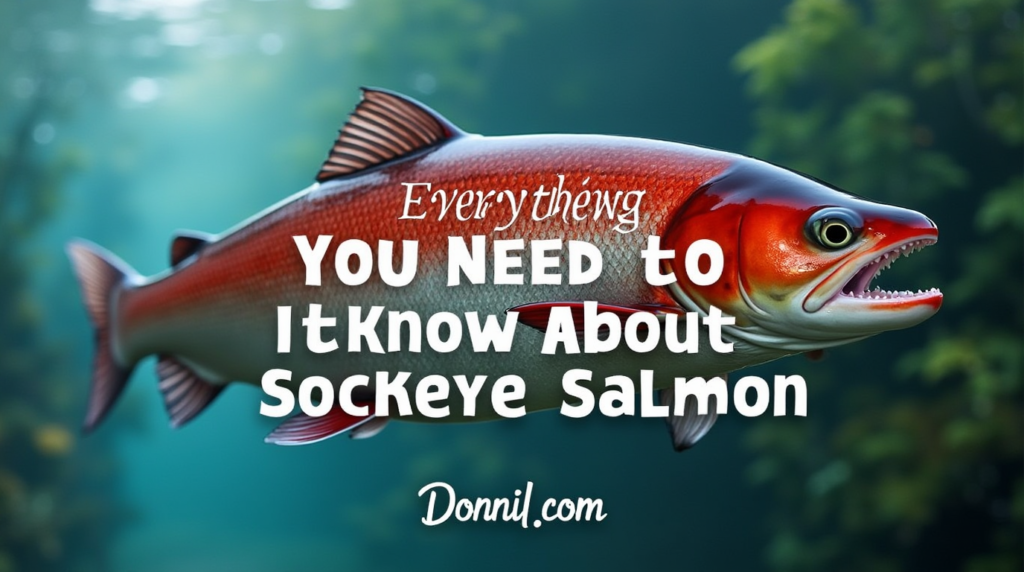
The Lifecycle of Sockeye Salmon
From Freshwater to the Ocean and Back
The journey of a sockeye salmon begins in the freshwater lakes and streams of North America’s Pacific coast—primarily in Alaska, British Columbia, and parts of the Pacific Northwest. After hatching from eggs buried in gravel nests called redds, the young fish, known as fry, emerge and spend up to three years in freshwater, depending on environmental conditions and genetics.
After this stage, they undergo a physiological transformation called smoltification. This enables them to survive in saltwater as they begin their migration to the Pacific Ocean. As smolts, they head downstream and eventually into the ocean, where they spend between one to four years feeding and growing to maturity. During this time, sockeye travel thousands of miles, sometimes as far as the waters near Japan or the Bering Sea, before turning back toward their natal rivers.
What’s truly incredible is their built-in GPS system. Using a combination of Earth’s magnetic fields and an acute sense of smell, sockeye salmon are able to return to the exact stream where they were born—even years later. This homecoming marks the final chapter in their life cycle: spawning.
This complex lifecycle—moving from freshwater to saltwater and back—makes sockeye salmon incredibly vulnerable to changes in water quality, temperature, and obstacles like dams or pollution. It’s a delicate balance, and even small disruptions can have significant impacts on population numbers.
Spawning and the Circle of Life
When sockeye return to freshwater to spawn, they stop eating entirely. All their energy is directed toward reaching their birthplace and reproducing. Their bodies change dramatically—females swell with eggs, males develop humped backs and hooked jaws called kypes to fight off rivals. This phase is as exhausting as it is miraculous.
Once they reach their spawning grounds, females dig nests in the gravel using rapid tail movements. After laying thousands of eggs, males fertilize them, and the female covers the eggs with more gravel for protection. Soon after spawning, both male and female sockeye salmon die, completing their life cycle.
But their death is not the end. In fact, it’s a vital part of the ecosystem. Their decaying bodies provide essential nutrients to the surrounding environment, enriching rivers, forests, and even influencing tree growth. Bears, eagles, wolves, and countless other animals rely on this seasonal feast, making the salmon’s journey not just a personal odyssey, but a linchpin for entire food webs.
Sockeye salmon aren’t just fish—they’re storytellers of the Earth, weaving life, death, and rebirth into a continuous cycle that affects land, water, and life far beyond their own species.
Habitat and Geographic Distribution
Where Sockeye Salmon Are Found
Sockeye salmon primarily inhabit the Northern Pacific Ocean and the rivers that feed into it. Their range spans from the Columbia River in the Pacific Northwest of the United States, through British Columbia in Canada, and up to Alaska, which is home to the largest sockeye runs in the world. On the western side of the Pacific, sockeye are found along the coasts of Russia and Japan, particularly in the Kamchatka Peninsula and Hokkaido.
Unlike some other salmon species, sockeye have more specific breeding and rearing habitat needs. They favor systems where lakes are present, especially because the juvenile phase (fry) relies heavily on lake environments for rearing. This is why you’ll find large sockeye populations in places like Bristol Bay, Alaska—a region renowned not just for its quantity of fish, but also the ecological health of its waters.
Freshwater lakes play a crucial role in their early life, but once mature, sockeye spend most of their adult lives in the open ocean, traveling thousands of miles through vast marine ecosystems. This dual-dependency makes their conservation even more critical, as disruptions in either freshwater or marine habitats can result in population declines.
As climate change progresses, some new habitats have started becoming viable for sockeye, while traditional strongholds have begun showing signs of stress. Monitoring their habitat use is now a key aspect of managing this species.
Migration Patterns and Habitats
Sockeye salmon are incredible long-distance swimmers. They begin their life in freshwater, migrate to the ocean, and then return—sometimes over 1,000 miles upstream—to spawn. These migration routes are not only long but fraught with danger: predators, pollution, warming waters, and dams all pose significant obstacles.
During their ocean phase, sockeye migrate across the North Pacific, feeding in nutrient-rich waters. They may travel in schools and stay in the ocean for one to four years before making their epic journey back to spawn. The timing of this migration is incredibly precise. Each population (also called a “run”) tends to return in the same season every year. For instance, the famed sockeye runs of the Fraser River in British Columbia generally return in late summer.
Migration is not only a physical feat but also a finely tuned biological clock. Sockeye rely on environmental cues such as water temperature, day length, and salinity changes to signal when it’s time to begin their journey. Disruptions in these cues due to climate change can result in mistimed migrations, impacting survival and reproduction rates.
Rivers and lakes with clear, cold water and healthy ecosystems are essential to supporting these migration patterns. When barriers like hydroelectric dams block their path, fish ladders or hatcheries are sometimes introduced to mitigate the impact—but the natural, unaltered migration remains the gold standard for species survival.
Nutritional Value of Sockeye Salmon
Health Benefits of Eating Sockeye Salmon
Sockeye salmon isn’t just delicious—it’s a powerhouse of nutrition. High in omega-3 fatty acids, rich in high-quality protein, and low in saturated fats, sockeye is often recommended by nutritionists, doctors, and health-conscious eaters around the world. Just one 3.5-ounce (100-gram) serving of cooked sockeye can deliver up to 1,200 milligrams of omega-3s, making it an excellent food for heart health.
These omega-3s, particularly EPA and DHA, play a vital role in reducing inflammation, improving cognitive function, and even lowering the risk of heart disease and stroke. For those aiming to support brain health, regular consumption of sockeye may help with memory and concentration. It’s also a great source of vitamin D, which supports immune function and bone health, especially for people living in colder climates where sunlight is limited.
Sockeye is packed with B vitamins—B12, niacin, and B6 in particular—which are essential for energy production and nervous system function. It’s also one of the best sources of selenium, a powerful antioxidant that supports thyroid health and may help protect against certain types of cancer.
And let’s not forget protein. Sockeye offers around 22 grams of protein per serving, making it perfect for athletes, bodybuilders, or anyone looking to build or repair muscle tissue. It’s also a satisfying option for people on low-carb or keto diets.
What sets sockeye apart nutritionally from other salmon? Its deep red color is a clue. That hue comes from astaxanthin, a potent antioxidant that’s more prevalent in sockeye than in most other salmon types. Astaxanthin helps protect cells from oxidative stress and may contribute to eye and skin health.
Nutritional Comparison with Other Salmon Species
Sockeye salmon often stands out among other species—not just for its taste and color but for its nutritional profile. Compared to Atlantic salmon, which is mostly farm-raised, wild-caught sockeye tends to have fewer calories but more nutrients per bite. Let’s take a closer look at how sockeye stacks up against some of its salmon cousins:
| Nutrient (per 100g cooked) | Sockeye Salmon | Atlantic Salmon | Coho Salmon | Chinook (King) Salmon |
|---|---|---|---|---|
| Calories | 206 | 208 | 180 | 231 |
| Protein (g) | 22 | 20 | 21 | 23 |
| Total Fat (g) | 12 | 13 | 10 | 15 |
| Omega-3 (mg) | 1,200+ | 1,000 | 900 | 1,700 |
| Vitamin D (% RDI) | 71% | 66% | 60% | 75% |
| Astaxanthin (mg) | High | Low | Moderate | Moderate |
Sockeye may not have the highest fat content, but its concentration of nutrients like astaxanthin and protein makes it a standout option. Plus, being primarily wild-caught means it has a cleaner, more natural profile with fewer contaminants and no added antibiotics or hormones, which are more common in farmed fish.
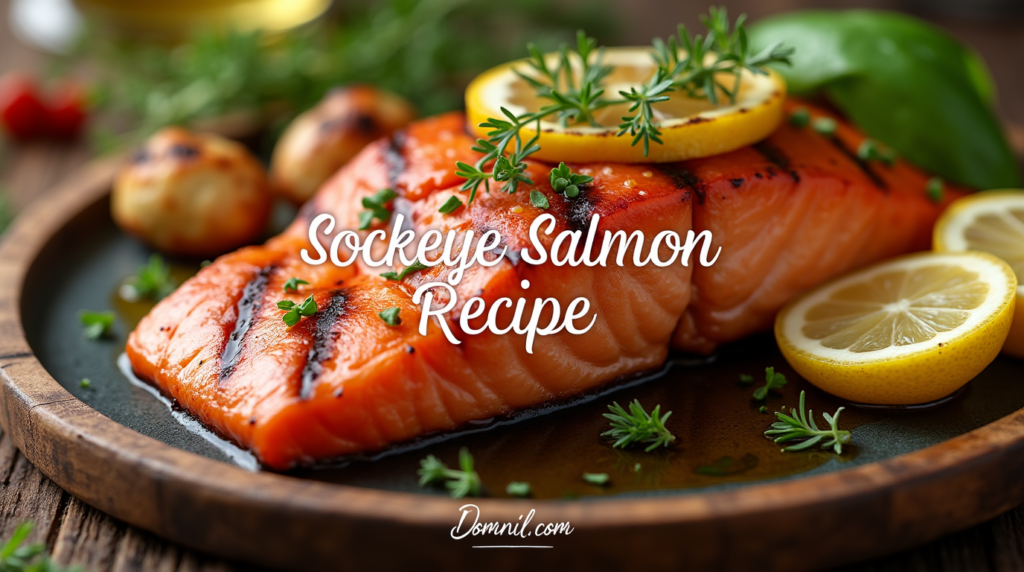
Commercial and Recreational Fishing
How Sockeye Salmon Are Caught
Sockeye salmon is a major commercial species, and much of it is caught using sustainable methods like gillnets, purse seines, and set nets. In Alaska, where most of the world’s sockeye is harvested, strict regulations ensure that fish are caught at sustainable levels, allowing enough salmon to escape and spawn for future generations.
Fishing for sockeye is seasonal, typically peaking during the summer months of June through August. During this time, commercial fishing boats flock to known sockeye hot spots like Bristol Bay, which produces over 40% of the global sockeye harvest. The economic importance of this run is massive—each summer, it generates hundreds of millions in revenue and supports thousands of jobs.
Recreational fishing is also popular, especially in rivers like the Kenai, Copper, and Fraser. Anglers love the challenge of catching sockeye due to their strength and speed. Sport fishing licenses help fund conservation efforts, making this more than just a hobby—it’s a tool for environmental stewardship.
However, with increasing demand, there’s pressure on fisheries to maintain sustainability. Overfishing in the past has led to collapses in sockeye populations in some regions. That’s why many fisheries now operate under quotas and monitoring systems to ensure long-term viability.
Environmental Importance
Role in the Ecosystem
Sockeye salmon aren’t just a crucial food source for humans—they’re the backbone of entire ecosystems. When they return to freshwater streams to spawn and die, their bodies become a nutrient-rich feast for over 130 different animal species, from bears and wolves to birds, insects, and even plants.
One of the most remarkable examples of this is seen in Alaska, where bears often catch salmon during spawning runs, eat only the fattiest parts, and leave the rest to decompose along riverbanks. These leftovers become natural fertilizer, enriching the surrounding soil. Studies have shown that the nitrogen from salmon carcasses significantly boosts the growth of trees and plants near spawning streams—some even grow twice as fast in areas with heavy salmon presence.
Their role doesn’t stop there. The nutrients sockeye bring back from the ocean—where they’ve been feeding on krill and plankton—help sustain the freshwater food web. Insects, fungi, and aquatic plants all benefit, which in turn supports young fish of all species, not just salmon. This nutrient cycle is so profound that even the timing of spawning events affects predator-prey interactions and plant cycles in the surrounding environment.
Without sockeye salmon, many river ecosystems would collapse or become severely diminished. Their disappearance in some regions has already caused ripple effects throughout food chains. That’s why protecting them isn’t just about saving a fish—it’s about preserving an entire interconnected web of life.
Connection to Other Species and Habitats
Sockeye salmon have deep, life-sustaining relationships with other species and habitats. Bears rely heavily on them in summer and fall, storing fat for hibernation. Eagles and gulls congregate around rivers during salmon runs for easy meals. Even aquatic insects feed on decaying salmon flesh, which later supports juvenile fish and birds.
But it’s not just about who eats them—it’s also about what they support indirectly. Salmon-dependent ecosystems are more biodiverse, more resilient, and more productive. When salmon numbers drop, everything from insect populations to bird migrations are affected.
Their habitats are equally vital. Sockeye thrive in clean, cold, oxygen-rich waters, which means their presence is often a sign of environmental health. Where sockeye are plentiful, the surrounding ecosystems are usually intact and well-functioning. Conversely, their decline often signals broader ecological trouble—pollution, deforestation, or climate impacts that degrade river systems.
Because of this, sockeye are considered a keystone species—a species whose impact on the environment is disproportionately large compared to their biomass. Protecting them means safeguarding hundreds of other species and the broader health of the Pacific Rim.
Conservation Efforts and Challenges
Threats to Sockeye Salmon Survival
Despite their strength and adaptability, sockeye salmon face a growing list of threats that put their survival at risk. Climate change is perhaps the most pressing. Warmer water temperatures disrupt migration timing, reduce oxygen levels in streams, and can even make habitats unlivable. Sockeye need cold water—ideally below 15°C (59°F)—and anything warmer can impair their ability to reproduce or even survive.
Habitat destruction is another major concern. Logging, mining, urbanization, and dam construction all degrade or block critical spawning grounds. Many sockeye runs have vanished entirely after a river system was altered or polluted. In places where their lake habitats have been dammed or diverted, sockeye populations plummeted, unable to complete their complex lifecycle.
Overfishing and illegal fishing still pose threats, especially in regions where regulations are weak or enforcement is limited. And invasive species—like predatory fish introduced into freshwater systems—can decimate juvenile sockeye before they ever make it to the ocean.
Add to this the complications from hatcheries. While hatcheries aim to supplement wild stocks, they can also dilute genetic diversity and introduce diseases if not managed properly. Hatchery-raised sockeye may not survive as well in the wild or compete with native populations for limited resources.
Finally, pollution—especially agricultural runoff and industrial waste—can poison freshwater habitats and harm both adult and juvenile fish. Microplastics and heavy metals are increasingly found in marine environments, with unknown long-term impacts on salmon health.
What’s Being Done to Protect Them
Thankfully, a wide range of conservation efforts are underway. In Alaska and British Columbia, strict fishing quotas, gear restrictions, and seasonal closures are enforced to ensure enough sockeye return to spawn. Some areas use “escapement goals”—minimum numbers of fish that must escape fisheries to reach breeding grounds.
Restoration projects are reviving degraded streams by removing dams, replanting trees along riverbanks, and restoring natural flow patterns. In Washington State, massive efforts have been undertaken to breach outdated dams, allowing salmon to return to historical spawning areas after being blocked for decades.
Indigenous communities have also taken leading roles in conservation, combining traditional ecological knowledge with modern science. Co-management strategies between tribal nations and governments are helping restore balance to salmon fisheries while respecting cultural traditions.
In the policy realm, sockeye salmon are protected under various environmental laws, including the U.S. Endangered Species Act in some regions. Activist organizations and environmental groups continue to push for stronger protections, particularly in the face of development projects that threaten crucial habitats.
Consumers can help too. By choosing certified sustainable sockeye—like those approved by the Marine Stewardship Council (MSC)—people can support responsible fisheries and reduce pressure on vulnerable stocks.
Despite the challenges, these efforts are making a difference. Sockeye runs in areas like Bristol Bay continue to thrive thanks to science-based management and community involvement. But constant vigilance and continued investment are needed to ensure their survival for generations to come.
Culinary Uses of Sockeye Salmon
Cooking Techniques and Recipe Ideas
Sockeye salmon’s rich, robust flavor and firm texture make it a culinary favorite. Unlike milder Atlantic or pink salmon, sockeye can stand up to bolder seasonings and more complex cooking methods without losing its identity. Whether grilled, smoked, pan-seared, or baked, sockeye always delivers.
Grilling is perhaps the most popular way to prepare sockeye. The high fat content keeps the fish moist, while the skin crisps up beautifully over open flames. A simple marinade of olive oil, lemon juice, garlic, and herbs enhances the natural flavor without overpowering it. Because sockeye is leaner than other salmon types, it cooks quickly—about 3-4 minutes per side depending on thickness.
Smoking is another traditional and beloved method, especially among Indigenous communities. Cold-smoking sockeye produces the silky, flavorful lox often seen on bagels, while hot-smoking brings out a flaky, bold texture perfect for charcuterie boards or flaked over salads.
If you’re after a weeknight dinner, try pan-searing a sockeye fillet with a touch of butter and a sprinkle of sea salt. Finish it with a splash of white wine or balsamic glaze, and you’ve got a restaurant-worthy dish in minutes. For a healthier twist, sockeye is fantastic roasted with veggies or steamed with soy sauce, ginger, and scallions for an Asian-inspired meal.
Love sushi? Sockeye is excellent raw if handled properly. Its firm flesh and strong flavor pair beautifully with wasabi, pickled ginger, or ponzu sauce. Just be sure to source sashimi-grade, flash-frozen wild-caught sockeye to minimize health risks.
Feeling adventurous? Sockeye also shines in recipes like fish tacos, salmon cakes, chowders, and even pasta. Its deep color also adds visual appeal to any plate—making it as much a feast for the eyes as for the stomach.
Grilled Lemon Garlic Sockeye Salmon Recipe Table
| Category | Details |
|---|---|
| Servings | 4 |
| Prep Time | 10 minutes |
| Cook Time | 10–12 minutes |
| Total Time | 20–25 minutes |

Ingredients
| Ingredient | Amount |
|---|---|
| Sockeye salmon fillets | 4 fillets (approx. 6 oz each) |
| Olive oil | 2 tablespoons |
| Garlic, minced | 3 cloves |
| Lemon zest | 1 tablespoon |
| Lemon juice | 2 tablespoons |
| Fresh dill (or dried) | 1 tablespoon (or 1 tsp dried) |
| Salt | 1 teaspoon |
| Black pepper | ½ teaspoon |
| Lemon slices (for garnish) | As needed |
| Optional herbs (rosemary/thyme) | A few sprigs |
Instructions
| Step | Action |
|---|---|
| 1 | Preheat grill to medium-high (400°F / 200°C) and oil grates. |
| 2 | Mix olive oil, garlic, lemon zest, juice, dill, salt, and pepper in a bowl. |
| 3 | Pat salmon dry and brush marinade over the flesh side. Let sit 10–15 mins. |
| 4 | Grill skin-side down for 6–7 mins. Flip and grill 2–4 mins more. |
| 5 | Remove from grill, rest briefly, garnish with lemon/herbs, and serve. |
Pro Tips
| Tip | Details |
|---|---|
| Don’t overcook | Sockeye is lean and quick-cooking—monitor closely. |
| Keep the skin on | It helps retain moisture and adds crispy texture. |
| Marinate briefly | Lemon juice can “cook” the fish if left too long (like ceviche). |
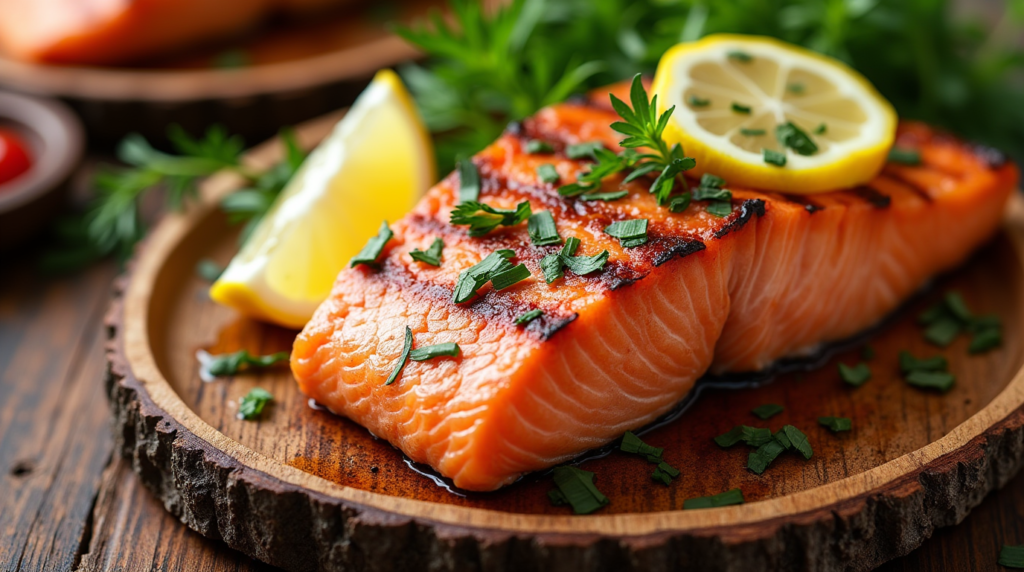
Sockeye Salmon vs. Other Types of Salmon
Key Differences with Atlantic, Coho, and Chinook
When it comes to choosing salmon, many people are faced with multiple options—Atlantic, Coho, Chinook, and of course, Sockeye. So what makes sockeye stand out? Let’s break it down by looking at taste, texture, appearance, and nutritional profile.
First, Atlantic salmon, which dominates most supermarket shelves, is almost exclusively farm-raised. It’s generally milder in flavor, paler in color, and softer in texture. In contrast, sockeye salmon is almost always wild-caught, with a deeper red flesh, a firmer bite, and a more pronounced flavor. This makes it a favorite among chefs and foodies who want bold flavor and a meaty texture.
Chinook salmon (also called king salmon) is the largest and fattiest of all Pacific salmon. It’s buttery, rich, and ideal for special occasions or indulgent meals. However, it’s also more expensive and less sustainable in some areas due to overfishing. Sockeye, while leaner, has a more concentrated flavor and a firmer texture, making it better for grilling or recipes where you want the fish to hold its shape.
Coho salmon, often called silver salmon, falls somewhere in the middle. It’s lighter in flavor than sockeye but firmer than Atlantic. Many people enjoy Coho for its balance, but if you want that classic, powerful salmon taste, sockeye wins the flavor contest hands down.
From a visual perspective, sockeye’s deep, ruby-red flesh is unmatched. This color is due to its diet rich in krill and plankton, which contain natural pigments called carotenoids. No other salmon species can match sockeye’s vibrant appearance, which also translates to higher antioxidant levels.
In short:
- Flavor: Sockeye is bold, Atlantic is mild, Chinook is buttery, Coho is balanced.
- Texture: Sockeye is firm, Atlantic is soft, Chinook is tender, Coho is medium.
- Color: Sockeye is deepest red, Chinook and Coho are pinker, Atlantic is pale.
- Fat Content: Chinook > Atlantic > Coho > Sockeye.
- Sustainability: Sockeye (wild-caught) often ranks highest.
Tools & Equipment for Grilled Sockeye Salmon
| Tool/Equipment | Purpose |
|---|---|
| Grill (gas or charcoal) | For cooking the salmon with that perfect smoky flavor |
| Fish grilling basket or foil | Prevents salmon from sticking or falling through grill grates |
| Mixing bowl | To combine and prepare the marinade ingredients |
| Whisk or spoon | For mixing the marinade |
| Basting brush | To evenly apply the marinade onto the salmon fillets |
| Tongs or fish spatula | For flipping and removing the salmon from the grill |
| Meat thermometer | Optional, to check internal temperature (ideal: 125–130°F / 51–54°C) |
| Paper towels | To pat the salmon dry before marinating |
| Cutting board | For prepping lemon slices and herbs |
| Knife | For chopping garlic, dill, and slicing lemons |
| Serving platter | To present the grilled salmon nicely with garnish |
Taste, Texture, and Cooking Performance
When cooked, sockeye’s firm flesh holds up beautifully, whether grilled, broiled, or smoked. It doesn’t flake apart as easily as Coho or Atlantic, which makes it ideal for kabobs, cedar plank grilling, or sushi preparations.
Its intense flavor means it pairs well with strong ingredients—think spicy rubs, citrusy glazes, or bold sauces like teriyaki or mustard-dill. It also shines in simple dishes where its natural flavor can take center stage. Unlike other salmon that need seasoning to boost taste, sockeye salmon brings its own party to the plate.
In terms of cooking performance, sockeye is less oily than Chinook, so it requires careful attention to avoid overcooking. A light touch and short cooking time are best to keep it moist and flavorful. Use a thermometer if needed—ideal internal temperature is 125°F (52°C).
Cultural and Historical Significance
Importance in Indigenous Cultures
Sockeye salmon holds deep cultural significance for Indigenous peoples across the Pacific Northwest, Alaska, and Canada. For many tribes—including the Tlingit, Haida, Coast Salish, and Nuu-chah-nulth—sockeye salmon is more than a food source; it’s a sacred symbol of life, continuity, and connection to the land and water.
Traditionally, sockeye was harvested during spawning runs using weirs, spears, and basket traps. Families would work together to catch, smoke, and dry the fish for winter storage, creating community bonds and preserving food for the cold months. These traditions continue today, passed down through generations, and are deeply embedded in Indigenous ceremonies, songs, and oral histories.
In many First Nations languages, there are specific names for sockeye salmon, reflecting its unique role. Ceremonies like the “First Salmon” ritual honor the return of sockeye, thanking the salmon spirit for its sacrifice and ensuring future abundance.
Modern Indigenous communities continue to fight for their rights to harvest sockeye sustainably and protect sacred rivers from development. Legal battles, conservation efforts, and co-management agreements underscore the importance of this fish—not just as food, but as a living part of cultural identity.
Historical Role in Coastal Communities
Even outside Indigenous communities, sockeye salmon has shaped the development of towns and economies along the Pacific Rim. In the 19th and 20th centuries, sockeye was a cornerstone of the canning industry. Entire towns sprang up around fisheries, particularly in Alaska and British Columbia, creating jobs and fueling trade across the U.S., Canada, and Asia.
Historic photos show long lines of sockeye being processed, canned, and shipped by the ton. Fishing fleets grew, railways were built, and entire generations earned their living from the sockeye runs. This legacy still exists today, as salmon festivals and museums celebrate the fish’s role in shaping coastal life.
Economic Impact
Sockeye Salmon in Global Trade
Sockeye salmon is a big player in the global seafood trade. Each year, millions of pounds are exported from Alaska and Canada to markets in Japan, Europe, and the United States. In fact, sockeye accounts for a significant portion of Alaska’s annual seafood exports, often bringing in hundreds of millions in revenue.
Frozen, canned, smoked, and fresh sockeye products are staples in international seafood markets. Premium wild-caught sockeye commands higher prices than farmed salmon, especially in upscale restaurants and health-focused food stores.
The rise of sustainable seafood has also increased sockeye’s value. More consumers are seeking out wild-caught, traceable, eco-friendly fish—and sockeye fits the bill. This demand has helped maintain high market prices, making it an attractive catch for fishers and a reliable income source for communities.
Employment and Industry Relevance
Sockeye salmon supports thousands of jobs—from commercial fishing crews and cannery workers to chefs, retailers, and environmental scientists. Seasonal fisheries create employment booms in remote towns, providing livelihoods where few other options exist.
Beyond direct jobs, sockeye also supports tourism and recreation industries. Anglers travel from around the world to fish for sockeye in pristine rivers, spending money on guides, gear, lodging, and food.
In places like Bristol Bay, the sockeye fishery is the economic heartbeat of the region. Every summer, it brings in over $300 million in revenue and supports more than 14,000 jobs. For many coastal towns, sockeye is not just a fish—it’s a way of life.
Sustainable Sockeye Salmon Practices
Farmed vs. Wild Debate
There’s an ongoing debate about farmed versus wild salmon, and sockeye sits squarely in the wild camp. Unlike Atlantic salmon, sockeye is rarely farmed, which helps preserve its wild populations and natural qualities.
Farmed salmon can pose environmental concerns—waste pollution, disease transfer to wild fish, and the use of antibiotics. Wild-caught sockeye, on the other hand, typically comes from well-managed fisheries that prioritize ecosystem health.
That said, farming technology is improving. Some operations now use closed containment systems to minimize environmental impact. But for purists and sustainability advocates, wild sockeye remains the gold standard.
Certifications and What to Look For
To ensure you’re buying responsibly harvested sockeye, look for these labels:
- MSC Certified (Marine Stewardship Council): Indicates sustainably managed wild fisheries.
- Alaska Seafood: Alaska has some of the strictest fishing regulations in the world.
- Ocean Wise: Recommends sustainable seafood options based on current science.
Always check the label for the source. “Wild-caught in Alaska” or “Product of Canada (wild)” are usually safe bets. Avoid vague terms like “Atlantic salmon” without further detail—this usually indicates farmed fish.
Supporting sustainable practices ensures not just the health of the sockeye population, but the ecosystems and communities that depend on them.
Tips for Buying Quality Sockeye Salmon
How to Choose the Freshest Cuts
When buying fresh sockeye salmon, your senses are your best guide. Look for fillets that are bright, deep red, and moist—not dry or discolored. The flesh should be firm to the touch and bounce back when pressed. If it smells overly “fishy,” walk away—fresh sockeye has a clean, oceanic scent.
If buying whole fish, check that the eyes are clear and slightly bulging—not sunken or cloudy. The skin should be shiny and free of bruises or brown spots. Gills should be bright red or pink, not grayish.
Frozen sockeye can be just as good—sometimes better—than fresh if it’s flash-frozen shortly after being caught. Look for vacuum-sealed packaging with no ice crystals (a sign of freezer burn). And check the label for harvest date, location, and certifications.
Price and Seasonal Availability
Sockeye salmon is typically more expensive than farmed Atlantic, but you’re paying for wild flavor, higher nutrition, and sustainable sourcing. Prices vary by season and location. During peak summer runs (June–August), sockeye is more affordable and widely available.
If you’re on a budget, consider buying canned sockeye. It retains much of the nutrition and flavor and works great in salads, patties, or pasta. Smoked sockeye is another option—pricier per pound but rich in taste and perfect for charcuterie or brunches.
Buying in-season and freezing portions at home is a smart way to enjoy sockeye year-round without breaking the bank.
Sockeye Salmon in the Future
Adapting to Climate Change
Sockeye salmon are at a crossroads. As climate change alters ocean temperatures, river flows, and seasonal patterns, sockeye populations must adapt or face decline. Scientists are already seeing changes in migration timing, spawning success, and food availability.
But nature is resilient. Some sockeye runs are adapting by spawning earlier, moving to higher elevations, or finding new habitats. Efforts are underway to map salmon genetics and understand which populations are more climate-resilient.
Fisheries managers are also adjusting quotas and rules to protect vulnerable runs. And community-driven conservation projects—like river cleanups and habitat restoration—are giving sockeye the tools they need to survive.
The Role of Science and Innovation
From satellite tracking and DNA analysis to AI-powered fish counters, technology is playing a bigger role in sockeye conservation. Scientists are using drones to monitor spawning grounds, genetic studies to identify resilient stocks, and even predictive modeling to forecast future challenges.
Innovative solutions like fish-friendly turbines, habitat simulations, and carbon credit funding are helping protect sockeye and the ecosystems they rely on.
The future of sockeye salmon depends on what we do today—how we fish, what we consume, and how we protect their homes. With the right balance of science, policy, and community action, sockeye salmon can continue to thrive for centuries to come.
Conclusion and Final Thoughts
Sockeye salmon is more than just a fish—it’s a symbol of strength, resilience, and interdependence. From their epic migrations and vital role in ecosystems to their unmatched flavor and cultural value, sockeye stand as a testament to nature’s brilliance.
Whether you’re an angler, a chef, a conservationist, or just someone who appreciates good food, sockeye salmon connects us to rivers, oceans, forests, and communities in a deeply meaningful way. But this connection comes with responsibility.
Let’s keep making choices that support wild fisheries, protect our waters, and honor the legacy of the salmon that feed the world—not just with nutrients, but with purpose.
FAQs
What is the best way to cook sockeye salmon?
Grilling or pan-searing are excellent choices. Keep it simple—olive oil, lemon, herbs—and cook until just done to preserve moisture and flavor.
Is sockeye salmon safe to eat raw?
Yes, if it’s sashimi-grade and properly handled. Look for wild-caught, flash-frozen sockeye from trusted sources to enjoy it raw in sushi or poke.
How does sockeye salmon differ from other Pacific salmon?
Sockeye is smaller but more flavorful than Coho or Chinook. It has a firmer texture and a deeper red color, making it ideal for grilling or smoking.
Can I catch sockeye salmon myself?
Yes! In many places like Alaska and British Columbia, recreational fishing is allowed with proper licenses and seasonal regulations. Always check local rules.
Why is sockeye salmon more expensive?
It’s wild-caught, limited in season, and highly nutritious. You’re paying for quality, sustainability, and that signature bold flavor.

